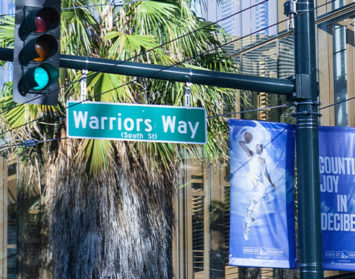Anybody these days who still believes the old axiom: “The more things change, the more they remain the same” hasn’t been paying attention to the economy this past year. One doesn’t have to refer to all the horrific events and bloodshed just in the last three months to make the case that these are fast-changing times — in many, many ways.
To be more specific, take a look at the real estate market. People were talking about an upcoming slowdown last year, but as of last December, homes in well-located neighborhoods were being sold as fast as an owner could stick a “For Sale By Owner” sign in his front yard. Interest rates were low, along with the supply of available new and pre-owned houses, while demand was high. Prices soared accordingly. Even with all the “FSBOs,” most real estate brokers and agents posted a record year. For most of 2000, it was the best of years, the best of times.
Now, consider the market today. Not only are there fewer buyers, but many of the homes listed are for sale under distressed conditions, given the massive layoffs in technology and other industries. Today, there is more product and fewer buyers — almost the exact opposite situation of just a year ago.
For the most part, the fast-changing situation is similar in commercial real estate, specifically the office submarket. A year ago, I wrote in a late-November column:
“We have a long-term robust real estate economy, the length and likes of which haven’t existed together since God invented dirt. Virtually every sector of the real estate market — commercial, industrial, investment, and residential — is continuing to experience strong demand, given the expansion of the area’s overall economy and the prospects for the good times to continue.”
Those words describe a totally different economic climate than we face today.
For example, as recently as last year, various dot-com companies occupied thousands of square feet of office space, largely in our suburban markets. Nobody could figure out just how these businesses penciled out, but at first they had money to hire people, lease office space and market whatever. Today, most dot-coms are history and the butt of bad jokes.
To a certain extent, other technology-based companies have felt sharp curtailments in their business in the past year, given the soaring vacancies in the buildings these companies once occupied. Nobody seems to agree just how much vacant and available office space there is in Sorrento Mesa, UTC and Carlsbad, but even landlord brokers are now acknowledging there are “plentiful options” for those looking for space to lease in those locales.
What an irony, considering the shellacking I got from landlords and their agents who took me to task for unduly alarming the marketplace about the growing vacancies in these areas in a column I wrote last summer. The shoot-the-messenger notion is one thing that hasn’t changed.
Moving downtown, the changes are almost as dramatic in some cases. A year ago, I was gushing over “the brisk activity in … downtown real estate sectors; in particular the number of high-quality rental and for-sale residential projects in the downtown sector.” True, the ballpark had been placed on hold, but most downtown players and observers were confident to some degree that the action was not going to be permanent. Fortunately, they were right.
In the past year, a new mayor and City Council have been installed and there’s now a new downtown city library planned as well as a financing plan to get the ballpark construction back on track in the coming weeks.
That’s the good news. The bad news is the abundant number of for-sale housing units being built in a market in which demand has become greatly diminished. There’s a lot of downtown housing product under construction out there — a “plentiful supply,” if you will. Combine that factor with skittish buyers, many of whom foresee price reductions and one can see why there’s concern this year on the part of developers who had hoped for more of a balance between supply and demand. Given all the product now under way, it’s going to be a while before we need additional projects to house future generations of downtown residents.
The downtown office market remains highly occupied, due largely to the continuing lack of new space inventory. Just because there are low vacancies in downtown’s office towers, however, doesn’t mean the area is immune from economic hardships. We can’t depend totally on the eventual development of one or two office towers and/or the ballpark to ensure a vibrant downtown.
For this year and beyond, downtown San Diego is the key to the future of the San Diego region. If there’s anything this past year has shown us it is that our best prospects to prosper as a region depends on a strong and vibrant downtown San Diego. Our political and business leaders need to think of downtown as a regional asset and allocate resources to promote and market the location accordingly.
If we do a good job enhancing downtown San Diego as a regional amenity, chances are we’ll have better news to report about our local real estate economy next year at this time.
Jason Hughes is founder of Hughes Marino, an award-winning commercial real estate company with offices across the nation. A pioneer in the field of tenant representation, Jason has exclusively represented tenants and buyers for more than 30 years. Contact Jason at 1-844-662-6635 or jason@hughesmarino.com to learn more.









